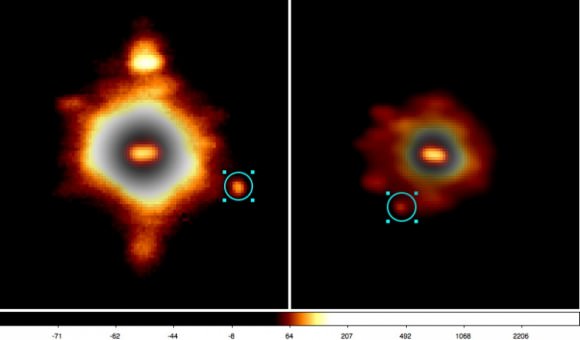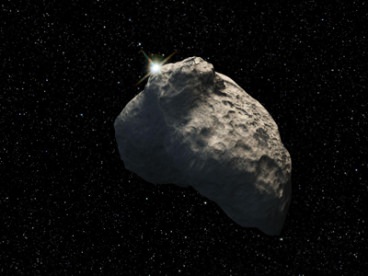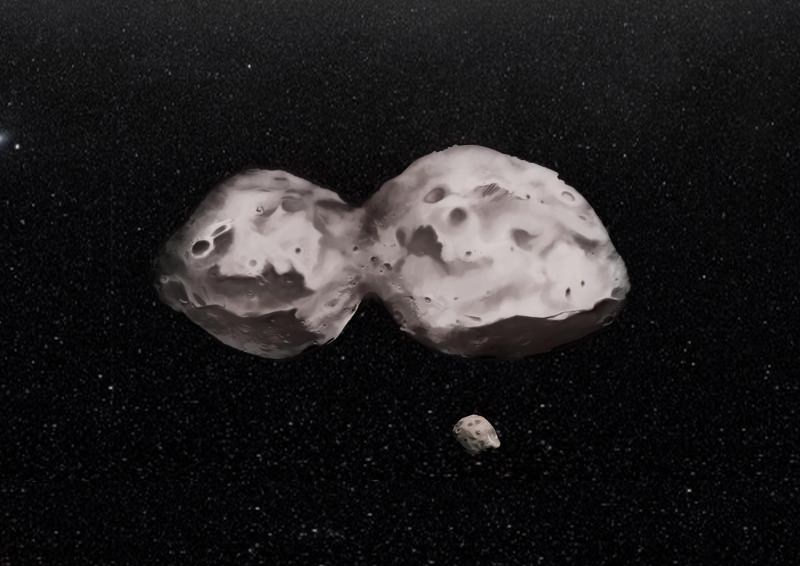Two icy asteroids could have crashed into each other early in the solar system’s history to form the strange-looking 624 Hektor, new research reveals. The 155-mile (250-kilometer) asteroid is the largest known Trojan asteroid, or space rock that follows along with Jupiter in the gas giant’s orbital path.
Hektor also has a moon, which was first discovered in 2006 by another team led by the same lead author, the SETI Institute’s Franck Marchis. It’s taken the astronomers about eight years to get a handle on the complex orbit of the system, a topic that the new research examines in detail. That was partly because the path was so “bizarre”, the team stated, and also because time on the W.M. Keck Observatory telescopes (used to perform the observations) is limited. There are few other observatories that could do the same work, the team added.
The moon, which is about 7.5 miles or 12 kilometers in diameter, orbits its parent asteroid every three days. The moon’s path is about 373 miles (600 km) distant and inclined almost at 45 degrees to the asteroid’s equator.

“The orbit of the moon is elliptical and tilted relative to the spin of Hektor, which is very different from other asteroids with satellites seen in the main-belt,” stated Matija Cuk, a paper co-author who is a scientist at the Carl Sagan Center of the SETI Institute. “However, we did computer simulations, which include Hektor being a spinning football shape asteroid and orbiting the Sun, and we found that the moon’s orbit is stable over billions of years.”
While the artist’s conception above shows Hektor as a peanut, the exact shape is still not known for sure. The models and the adaptive optics suggest that it is likely a dual-lobe asteroid. What is better known, however, is that the asteroid is “extremely elongated” and spins in less than seven hours.
The origin of the moon is unclear, but the researchers suggested it could be because of ejecta associated with the collision that formed the asteroid. They said more simulations are needed on that point. What’s more, Hektor has another mystery associated with its composition.

“We also show that Hektor could be made of a mixture of rock and ices, similar to the composition of Kuiper belt objects, Triton and Pluto. How Hektor became a Trojan asteroid, located at only 5 times the Earth–Sun distance, is probably related to the large scale reshuffling that occurred when the giant planets were still migrating,” stated Julie Castillo-Rogez, a researcher at NASA’s Jet Propulsion Laboratory who participated in the research.
You can read more about the research in Astrophysical Journal Letters. By the way, the moon does not have a name yet, and the researchers said they are looking for any ideas as long as it fulfills a couple of ideas: “the satellite should receive a name closely related to the name of the primary and reflecting the relative sizes between these objects.” Feel free to share your suggestions in the comments.
Source: W.M. Keck Observatory

